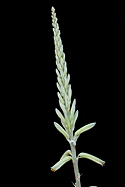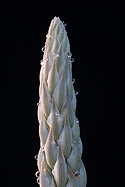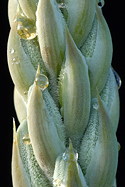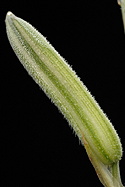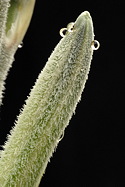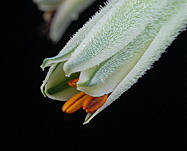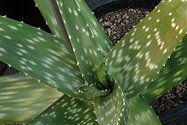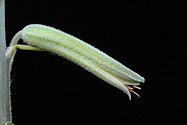For a number of years we unsuccessfully attempted self-pollination of the lone plant of this accession. Then, some years ago Karen Zimmerman’s efforts were rewarded when the plant produced copious fruit. At first we assumed hybridization even though the plant never left our greenhouse where unwanted pollinators are excluded. In any case, hybrid or not, it seemed worthwhile to grow the seed of this rarity. At this point, our seedlings are uniform and bear the generous white spots and exceedingly succulent leaves of the species, so they appear to have come true. They have also shown the slow growth and sensitivity to excess moisture of the parent. We have yet to see if they produce the characteristic pubescent, greenish-yellow flowers of the species. Also characteristic of the parent, at least, is copious nectar production from extra-floral nectaries that produce scattered droplets of sticky fluid on the inflorescence bracts, buds and flowers. HBG108056, plants from self-set seed of HBG 58235, a plant collected Nov. 30, 1986, by Lavranos (25023), Barad, Carter, Kimnach & Linden, 90 km S of Bulo Burti, on the road to Mogadishu, Somalia. It grew with Adenia globosa, A. ellenbeckii and Desmidorchis (Caralluma) speciosa. $15.
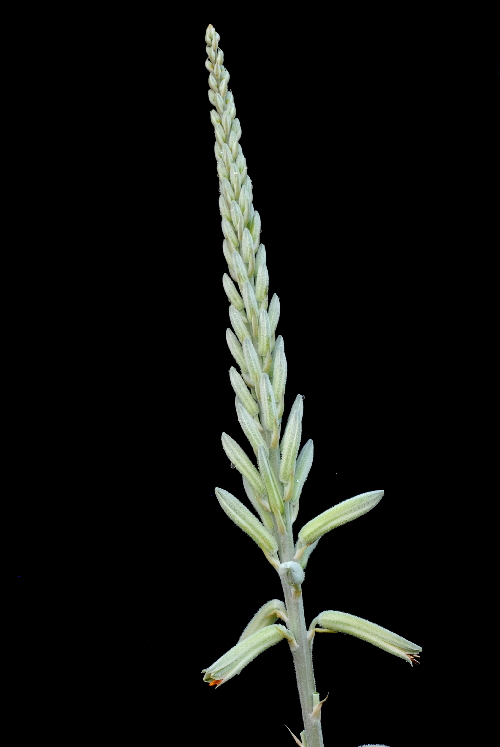
Published in the Cactus and Succulent Journal, Vol. 84 (2), March - April, 2012
